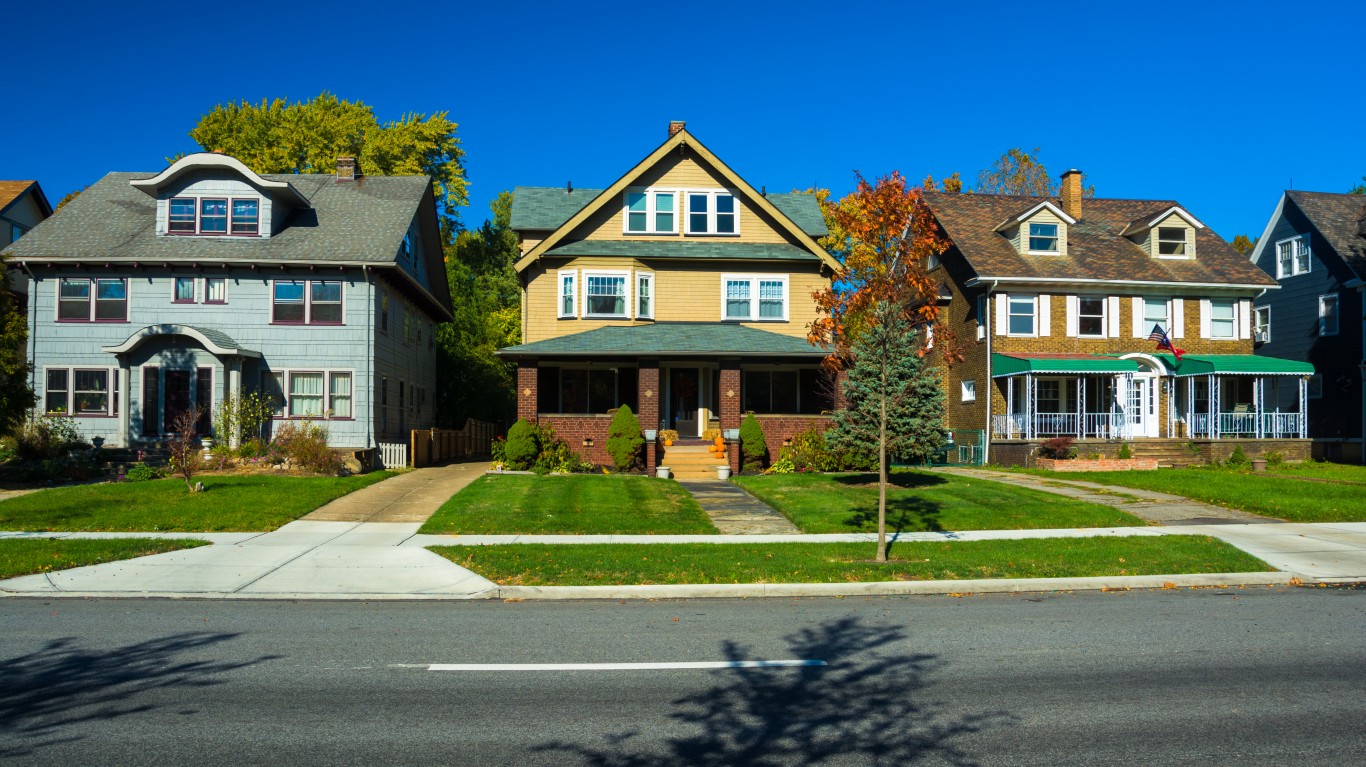
Home prices soared during the worst of the pandemic and continued to do so until less than a year ago. As the Federal Reserve raised interest rates, mortgage rates jumped with them. These rates rose from about 3% a year and a half ago to 6%. People who might have bought a home not long ago cannot afford one anymore. This has hit home prices in several cities, particularly those with the highest price rises when the housing market was the hottest. (This is the state where $200K will buy the largest house.)
[in-text-ad]
Another dent in home prices is the mobility driven by the work-from-home economy. In many cases, people no longer needed to be located near the offices they once occupied. People often moved to the Southwest or to Florida for better weather and quality of life. The cost of living also was lower than in large coastal cities like New York and San Francisco. Data show that people are much less likely to move now, particularly for new jobs. This also has slowed the housing market.
Another challenge to rising home prices is that other homeowners do not want to sell. They have very low mortgage rates because they were taken out during the low-interest rate period that ran for almost a decade. They do not want to take on higher mortgage rates to move to other houses.
A new report, “The Cities Where Homes Are Selling the Most Above List Price—and Where Buyers Can Snag the Best Deals,” indicates that cities where home prices have weakened the most are indeed those where tens of thousands of people have relocated since 2020. Demand has driven prices to an unsustainable record. Realtor.com, the author of the research, used the yardstick of the initial listing price compared to the price when the home was sold. It looked at data from March.
The five cities where home prices were most discounted were Austin, Phoenix, Jacksonville, Las Vegas and New Orleans. The first four of them were major destination cities since early 2020.
Austin took the worst of it in March. The median home price is still high, at $449,120, compared to the national average. The discount based on the Realtor.com formula was 6.8% below the listing price. Hannah Jones, a Realtor.com economic analyst, pointed out that “Austin inventory is up 258% year over year. It’s leading the country for inventory increases. So if sellers want to sell their homes, they’re generally having to sell for less than what they listed for.” Based on that trend, Austin buyers will have a challenge for much longer.
Are You Ahead, or Behind on Retirement?
If you’re one of the over 4 Million Americans set to retire this year, you may want to pay attention. Many people have worked their whole lives preparing to retire without ever knowing the answer to the most important question: am I ahead, or behind on my goals?
Don’t make the same mistake. It’s an easy question to answer. A quick conversation with a financial advisor can help you unpack your savings, spending, and goals for your money. With Zoe Financial’s free matching tool, you can connect with trusted financial advisors in minutes.
Why wait? Click here to get started today!
Thank you for reading! Have some feedback for us?
Contact the 24/7 Wall St. editorial team.




